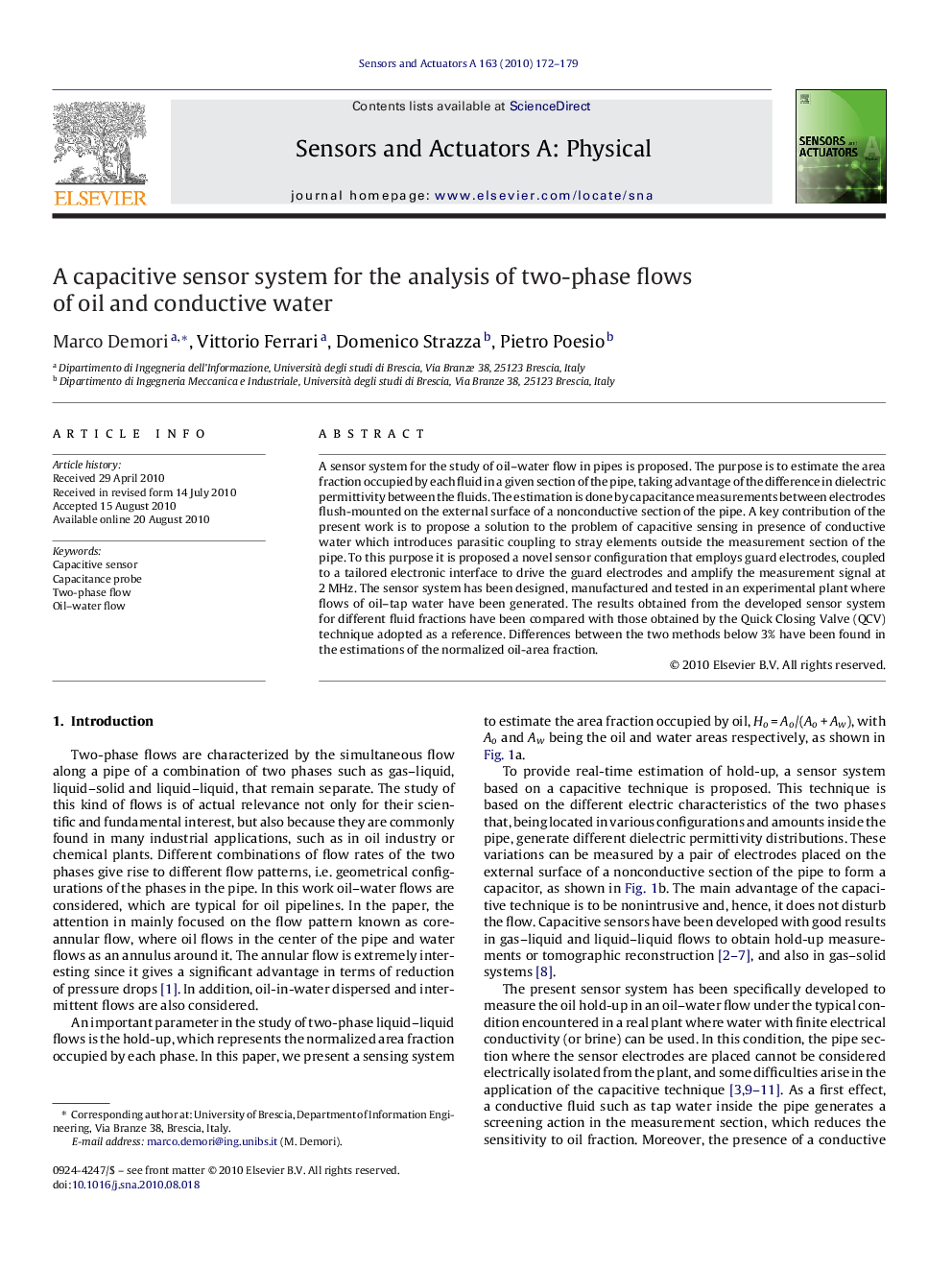| Article ID | Journal | Published Year | Pages | File Type |
|---|---|---|---|---|
| 736539 | Sensors and Actuators A: Physical | 2010 | 8 Pages |
A sensor system for the study of oil–water flow in pipes is proposed. The purpose is to estimate the area fraction occupied by each fluid in a given section of the pipe, taking advantage of the difference in dielectric permittivity between the fluids. The estimation is done by capacitance measurements between electrodes flush-mounted on the external surface of a nonconductive section of the pipe. A key contribution of the present work is to propose a solution to the problem of capacitive sensing in presence of conductive water which introduces parasitic coupling to stray elements outside the measurement section of the pipe. To this purpose it is proposed a novel sensor configuration that employs guard electrodes, coupled to a tailored electronic interface to drive the guard electrodes and amplify the measurement signal at 2 MHz. The sensor system has been designed, manufactured and tested in an experimental plant where flows of oil–tap water have been generated. The results obtained from the developed sensor system for different fluid fractions have been compared with those obtained by the Quick Closing Valve (QCV) technique adopted as a reference. Differences between the two methods below 3% have been found in the estimations of the normalized oil-area fraction.
